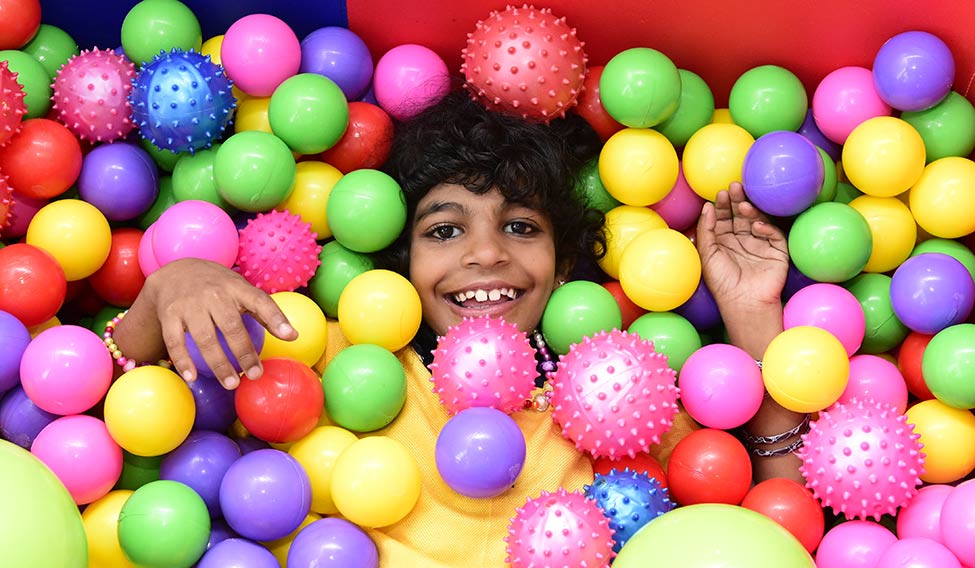For more than 20 years from 1977, the Plantation Corporation of Kerala showered its cashew plantations in Kasaragod district with endosulfan, a pesticide of the organochlorine class to which the infamous DDT belongs. The deadly chemical, sprayed from helicopters, polluted the earth, air and water. Pristine streams and ponds became toxic and the soil infertile. Cows gave birth to deformed calves, and then the same tragedy befell a large number of pregnant mothers.
In 1998, the government suspended the aerial spraying and banned it in 2001. But the environmental deterioration and health hazards continue to haunt people. Alarmingly high levels of endosulfan residues have been detected in blood samples of people in affected areas. “It has been an unending curse,” said District Collector Jeevan Babu at the inauguration of the Mahatma Model Child Rehabilitation Centre for victims of endosulfan at Periya in November, 2016.
Dr Mohammed Asheel, executive director of Social Security Mission and assistant nodal officer of the special cell for rehabilitation of endosulfan victims, told THE WEEK that 5,227 patients in the district were classified as endosulfan-affected, after screening about 31,200 people. The model child rehabilitation centre was built under a special package for endosulfan victims using NABARD’s rural infrastructure fund.
State-of-the-art facilities, costing about 01 crore, were installed at the centre using funds raised by schools across the state under Nallapaadam, an educational project of the Malayala Manorama newspaper.
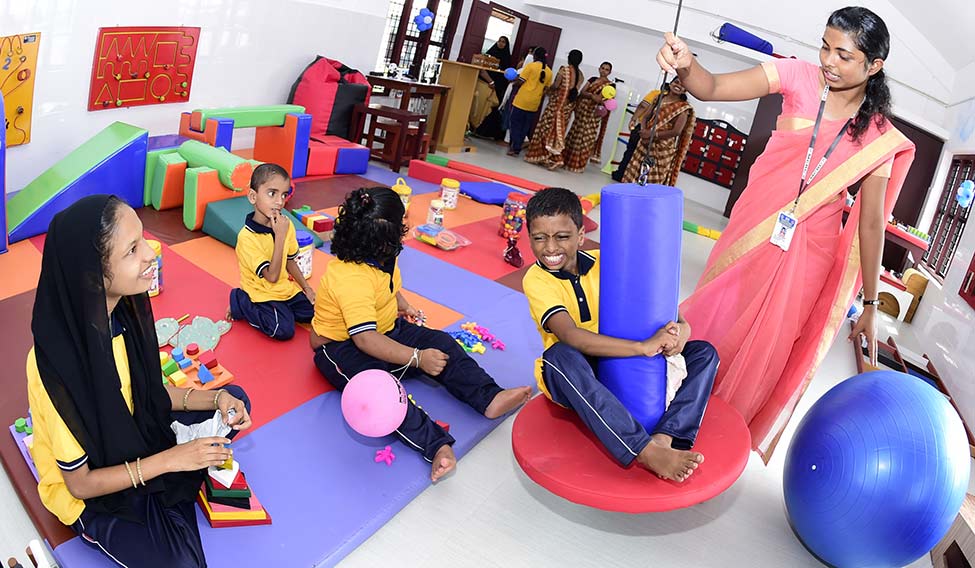 Buds blossom: Children in the occupational therapy room at the Mahatma Model Rehabilitation Centre | Sajeesh Sankar
Buds blossom: Children in the occupational therapy room at the Mahatma Model Rehabilitation Centre | Sajeesh Sankar
Asheel said the centre was trying to develop a clear evaluation pattern to measure the children’s improvement. “This includes early intervention [by government hospitals] for surgical correction of abnormalities before the age of five. Then we have goals for each age group, like the child being able to stand or walk. After that the children move to the next level. What we are looking at is not the chronological age, but the physical and mental ability they have achieved,” he said.
Dr Biju Nirmal Jacob, paediatric physiotherapist, who has been evaluating the children, said they had both physical and mental challenges. “Some don’t walk because they don’t know how to walk. There are natural positions for certain activities; writing, driving, eating, etc, are done from a central position. These children lack that coordination. We aim to make their bodies achieve these natural positions through physiotherapy,” he said.
Nine-year-old Sreehari is an example of the benefit of this systematic method. He had respiratory distress at the time of birth and it led to hypoxia and brain cell damage. Because of this, his leg muscles became tight and he could not walk. He had orthopaedic surgery at the age of four, followed by physiotherapy, which strengthened weak muscles and stretched tight muscles helping to improve his propulsive gait. Jacob said that after six more months of physiotherapy Sreehari would walk without help.
Said the boy’s mother, Vasanthi: “If centres like this had existed earlier, my son might have started walking now. It is a special moment for parents when their child takes his first step. We have been waiting nine years for that moment.”
Vasanthi could afford the medical intervention and care her son needed, but most others are like Vinoda P.D., whose 13-year-old daughter Priyanka suffers from a motor neurone disease. The widowed mother is unable to work because Priyanka needs constant care. “She cannot eat even when she is hungry. She cannot do anything, so I cannot leave her alone,” said Vinoda. Her son, Rahul, 11, is in school.
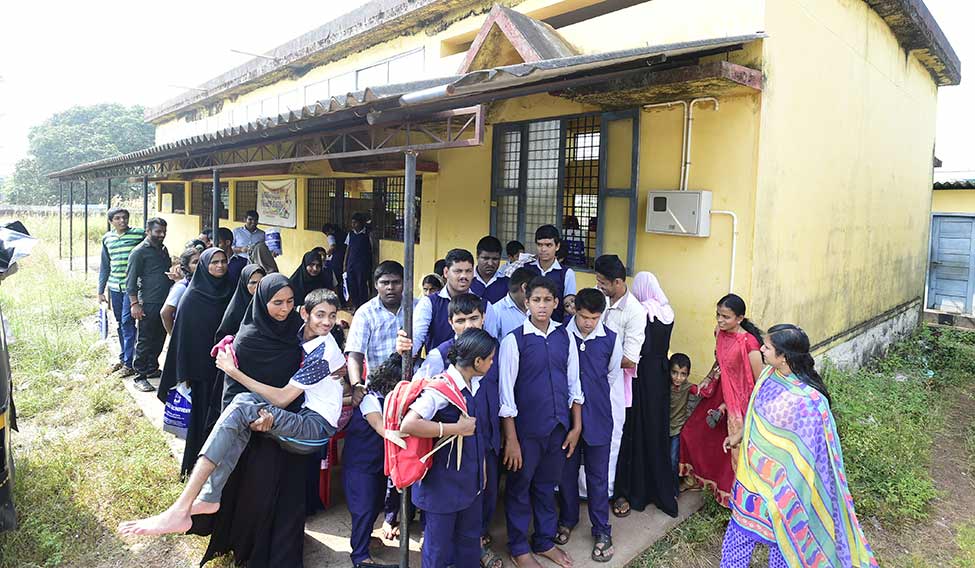 Campus upgrade: The old Mahatma Buds School, which functioned from the community hall at Periya, Kasaragod | Sajeesh Sankar
Campus upgrade: The old Mahatma Buds School, which functioned from the community hall at Periya, Kasaragod | Sajeesh Sankar
The family survives on Priyanka’s endosulfan pension of Rs 1,700, Vinoda’s widow pension of Rs 700 and a dole of Rs 700 from the Kerala Social Security Mission. Vinoda received Rs 3 lakh in aid from the government and Rs 75,000 under the EMS Housing Scheme. “Rs 5 lakh was announced, but I have got only Rs 3 lakh. I have used this money mostly for Priyanka’s treatment and to build this house,” she said. “The old school did not have buses and so taking her there was expensive. Autorickshaw drivers demanded Rs 250 one way,” said Vinoda.
The old Mahatma Buds School for endosulfan children had been functioning in a community hall. Though it had 113 students on the rolls, only 55 attended class. Most others could not reach school for lack of transport. Dr Sreejith Krishnan, the head of the new centre, where the school will now move to, said he would start a school bus to pick up students from roads near their houses and even from their doorsteps. He said the school for endosulfan victims would also serve other children with disabilities.
Mathews Varghese, associate editor of the Malayala Manorama, said the centre was a model for the government to replicate in other special schools. There are 63 Buds schools in Kerala and most of them make do with one or two special educators.
 The new campus | Sajeesh Sankar
The new campus | Sajeesh Sankar
While inaugurating the new centre, Chief Minister Pinarayi Vijayan said the Endosulfan Rehabilitation Cell would be reconstituted. The state budget has earmarked Rs 10 crore for the welfare and rehabilitation of endosulfan-affected people. The government has also decided to hand over 15 acres of revenue land to a charitable organisation, Sathya Sai Trust, to build 108 houses for the affected people, he said.
Much more is required to dispel the despair in their lives. Reminding everyone of the long and difficult battle with illness, one of them, 62-year-old K. Rajeevi, put an end to her life, two days after the inauguration of the rehab centre. For Rajeevi, aid did not come fast enough. For the others, there is still a chance if the government and the people come together to help them.
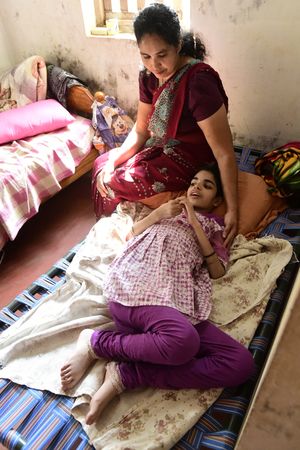 Faith and hope: Vinoda and her daughter Priyanka at their home | Sajeesh Sankar
Faith and hope: Vinoda and her daughter Priyanka at their home | Sajeesh Sankar
Equipped to change
The new model rehabilitation centre has three age divisions: 0-5, 6-12 and 13-18. These are not chronological, but progress-based. A student moves out of the 0-5 age group once she has achieved the physical and mental growth desired for that age.
The second age group, 6-12, focuses on exercising their imagination and thought process to identify their abilities. The third age group allows them to nurture their talents.
The centre has 214 equipment that help children learn as well as overcome disabilities. In physiotherapy, there are special easy chairs for bedridden children to sit up, and electrical parallel bars support them as they stand. The height of the bars can be adjusted as their posture improves. Hippotherapy, using a simulator that moves horse-like, helps to promote postural responses.
Other machines such as shoulder wheel, grip exerciser, wrist rotatory machine and ankle exerciser help children improve coordination of their hands and legs.
In occupational therapy, which aims to make the children capable of performing day-to-day activities, ‘kerb and ramp’ helps to improve their balance. Multiple surfaces are used to programme the brain to identify which surfaces are slippery and which will provide firm footing. Fine motor therapy is designed to enable the children to open or close latches and bolts, turn doorknobs, etc.
The centre also has a sensory integration room to make the children aware of their senses. This room uses laser lights, tactile walls that have a range of shapes and texture walls that have a variety of textures.
There is also a sensory garden with a disabled-friendly walking path. A virtual rehab unit has video games that help the brain learn movements and patterns.
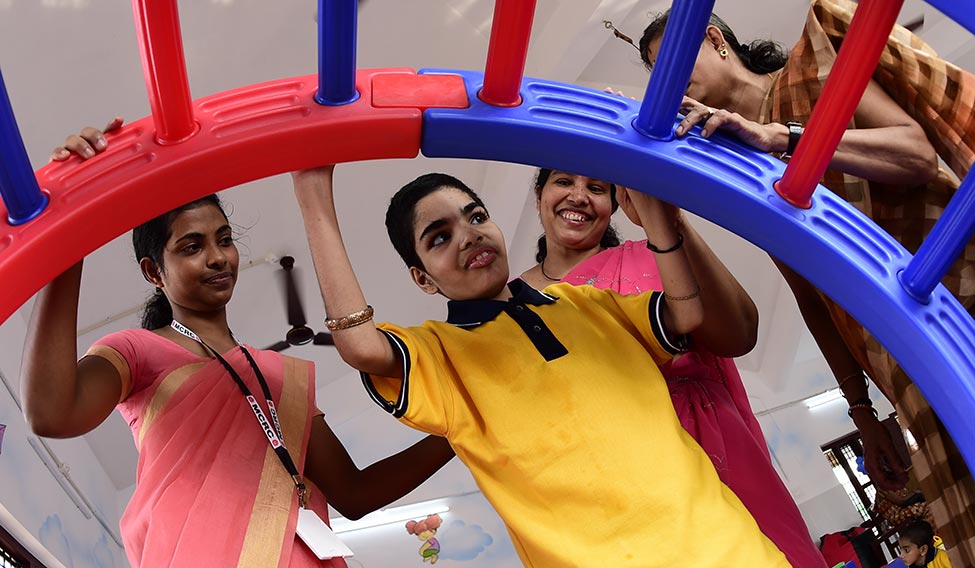 Priyanka during therapy at the new model rehab centre | Sajeesh Sankar
Priyanka during therapy at the new model rehab centre | Sajeesh Sankar




